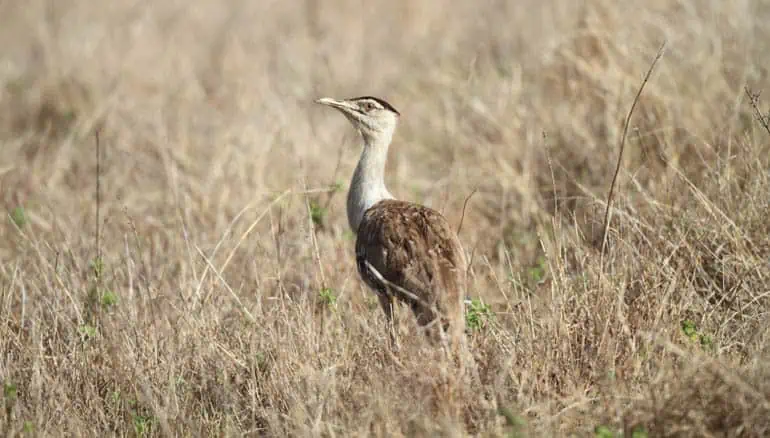Bush Turkey

I remember seeing large groups after good summer rains in the Victoria Desert. It is the largest flying ground-dwelling bird in Australia, and it is lovely to see them in flight, although they often don’t fly too far and only after being disturbed. In days gone by, the birds formed an important food source for local Aboriginal people
It stands proudly with an erect posture and has a distinctive white body with blackish-grey wings and tail feathers. Yellow legs and face wattles which can vary in colour between individuals. The wattles become especially prominent during displays when they swell up and form an impressive fan shape that serves as a warning or territorial display.
The Male Bush Turkey display call by Marc Anderson, XC156198. Accessible at www.xeno-canto.org/156198
The male can grow to 1.2 m (47 in) tall with a 2.3 m (7.5 ft) wingspan. The average weight for males is 6.3 kg (14 lb), ranging from 4.3 to 12.76 kg (9.5 to 28.1 lb). Although of similar colour, the female turkey is smaller at 8 cm (31 in), with a 1.8 m (5.9 ft) wingspan. The female average body mass is 3.2 kg (7.1 lb), ranging from 2.4 to 6.35 kg (5.3 to 14.0 lb).
Bush Turkey has a broad, omnivorous diet found on the grasslands, including: fruit, seeds, invertebrates and small vertebrates. They move readily, following good rains where ges and insects flourish. You also see them on the periphery of fires finding cooked food. They also love to follow grasshopper outbreaks across the landscape. The Atlas of Living Australia has more information on the Brush Turkey in terms of distribution, literature and classification.

